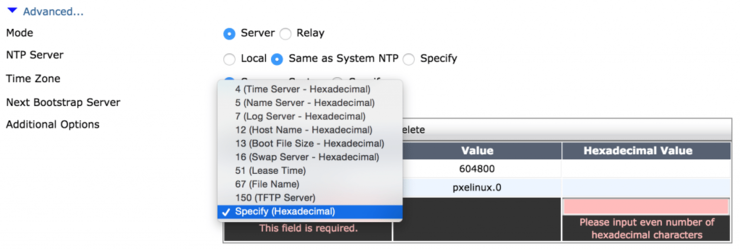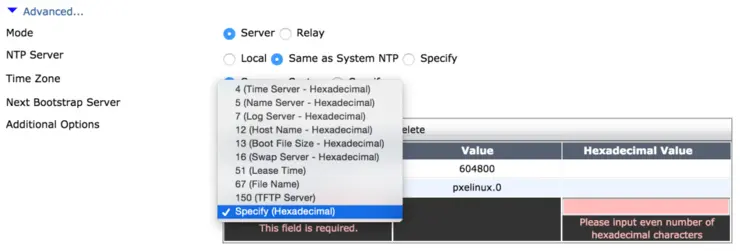I have been recently setting up The Foreman ↗ as a Puppet ↗ management front end to allow me to quickly provision Linux based VMs on my VMware cluster - more on that setup in another article.
I had to create a PXE boot environment for The Foreman to fully automate the provisioning of the VMs, I run a Fortigate 100D ↗ in my lab from which DHCP is served, as you may or may not know, the PXE boot options are served from DHCP ↗.
Fortigate use the next-server command to tell the client where to find the next bootstrap server, or, the server that hosts the TFTP instance.
There is a DHCP option in the IANA list we are particularly interested in is:
Tag Name Data Length Meaning Reference
67 Bootfile-Name N Boot File Name [RFC2132]
We must set this option ↗ to tell the PXE client what filename it is looking for on the TFTP server.
Fortigate have a strange way of doing this particular config, at least in the latest version (5.2.2) which I am running.
I like to configure from the CLI but couldn’t help but noticing in the GUI that there was a new section added to the DHCP config:

It seems to allow some commonly-set DHCP options to be selected and specified with ASCII rather than hex:

Anyway, we can do all this through the CLI as well, firstly navigate to the DHCP server instance in question:
show system dhcp server 2
My output looks like this:
config system dhcp server
edit 2
set dns-service default
set ntp-service default
set default-gateway 10.0.0.1
set netmask 255.255.254.0
set interface "LAN"
config ip-range
edit 1
set start-ip 10.0.0.2
set end-ip 10.0.1.199
next
end
set timezone-option default
next
end
To this we need to add the next-server and filename directives to set the DHCP options for TFTP server and boot file name.
config system dhcp server
edit 2
set next-server 10.0.2.15
set filename "pxelinux.0"
next
exit
This should now point your DHCP client (Intel E1000 on ESXi) to the TFTP server 10.0.2.15 which is for this example my Foreman server and tell it to pull the pxelinux.0 file to begin the boot and install from network.
Why not follow @mylesagray on Twitter ↗ for more like this!
